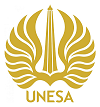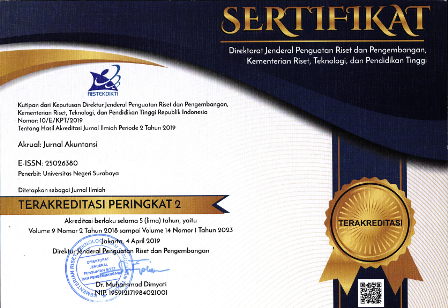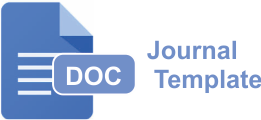The Effort to Realize Government Effectiveness Through Implementation Fully Accrual Accounting and Control Against Corruption
DOI:
https://doi.org/10.26740/jaj.v15n2.p128-136Keywords:
Government Effectiveness; Accrual Accounting; Control of Corruption Corruption Perception Index.Abstract
Introduction/Main Objectives: This study aims to analyze how far the influence of the implementation
of the accrual accounting public sector on the Government and control of corruption could increase
government effectiveness. Background Problems: This means that countries that fully adopted
accrual accounting and had control of corruption (a high Corruption Perception Index score) tend to
have better government effectiveness, and vice versa. Research Methods: Using cross-country data
for 2020 with a final sample of 194 countries. Finding/Results: This study shows that the accrual
accounting public sector and the Corruption Perception Index (CPI) positively affect government
effectiveness. Conclusion: Therefore, to increase government effectiveness, it was necessary to make
effective law enforcement and control strategies to prevent corruption.
References
Champoux, M. (2006). Masalah dan solusi, seminar kebijakan anggaran. 2018, 13.
Dunn, W. N. 2003. (2003). Pengantar Analisis Kebijakan Publik. Edisi Kedua. In Pengantar Analisis Kebijakan Publik.
Lambsdorff, J. G. (2007). The methodology of the corruption perceptions index 2007. Internet Center for Corruption Research.
Lewi, M. (2006). Mengapa kita membutuhkan teori baru tentang pemerintahan, perspektif politik.
Nugroho, R. (2023). Public Policy 7: DInamika Kebijakan Publik, Analisis Kebijakan Publik, Manajemen Politik Kebijakan Publik. PT Elex Media Komputindo.
United, N. (2014). E-Government Survey: e-Government for the Future We Want. United Nations.
World Bank. (2018). Kondisi Jaring Pengaman Sosial 2018. DC: Bank Dunia.
Downloads
Published
How to Cite
Issue
Section
License
Copyright (c) 2024 Siti Faradila S. Saud Saud

This work is licensed under a Creative Commons Attribution-NonCommercial 4.0 International License.
 Abstract views: 488
,
Abstract views: 488
, PDF Downloads: 520
PDF Downloads: 520

















